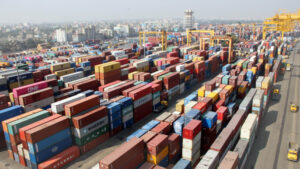
Although Chittagong anchorage did not see any big incidents of robbery or piracy, minor incidents were quite regular. The number of such incidents of theft was highest 21 in 2010, 14 in 2011, 12 in 2012, 10 in 2015, one in 2016, 11 in 2017 and 9 in 2018. As a result, international organisations marked Bangladesh maritime boundary as risky.
According to sources, some unscrupulous sailors were involved with some incidents of theft and robbery in the vessels in the outer anchorage. They had a sort of ‘exchange contract’ with unauthorised food suppliers on these ships anchored in the deep sea. They facilitated the removal of some goods from the ship in exchange for food delivered to them for free. They later reported to the port authorities that those goods were stolen.
To thwart such activities in the deep sea, the authorities started surveillance through Vessel Traffic Management Information System (VTMIS) from the port’s wireless control room. Port authorities inform the coast guard if they find the presence of any suspicious vessels.
Coast guard patrols a 12 nautical mile territory in the sea from the baseline while the navy patrols the remaining maritime area of the country. It is a laudable effort from three organisations to keep Bangladesh’s sea free from robbery and piracy as it improves the country’s image in the international arena. International vessels will consider Bangladesh’s maritime boundary as safe while insurance premiums and cost of transport of ships would decrease as a result.
While the authorities can bask in the glory of the success, we hope the concerned authorities continue their efforts so that this situation lasts. Also, the port’s capacity should be further enhanced to keep up with global competition. Businesspersons would want cargo to be unloaded speedily from the port after a ship anchors. It is imperative to make the port competent and safe as it handles 93 per cent of export and import of the country by sea route.
